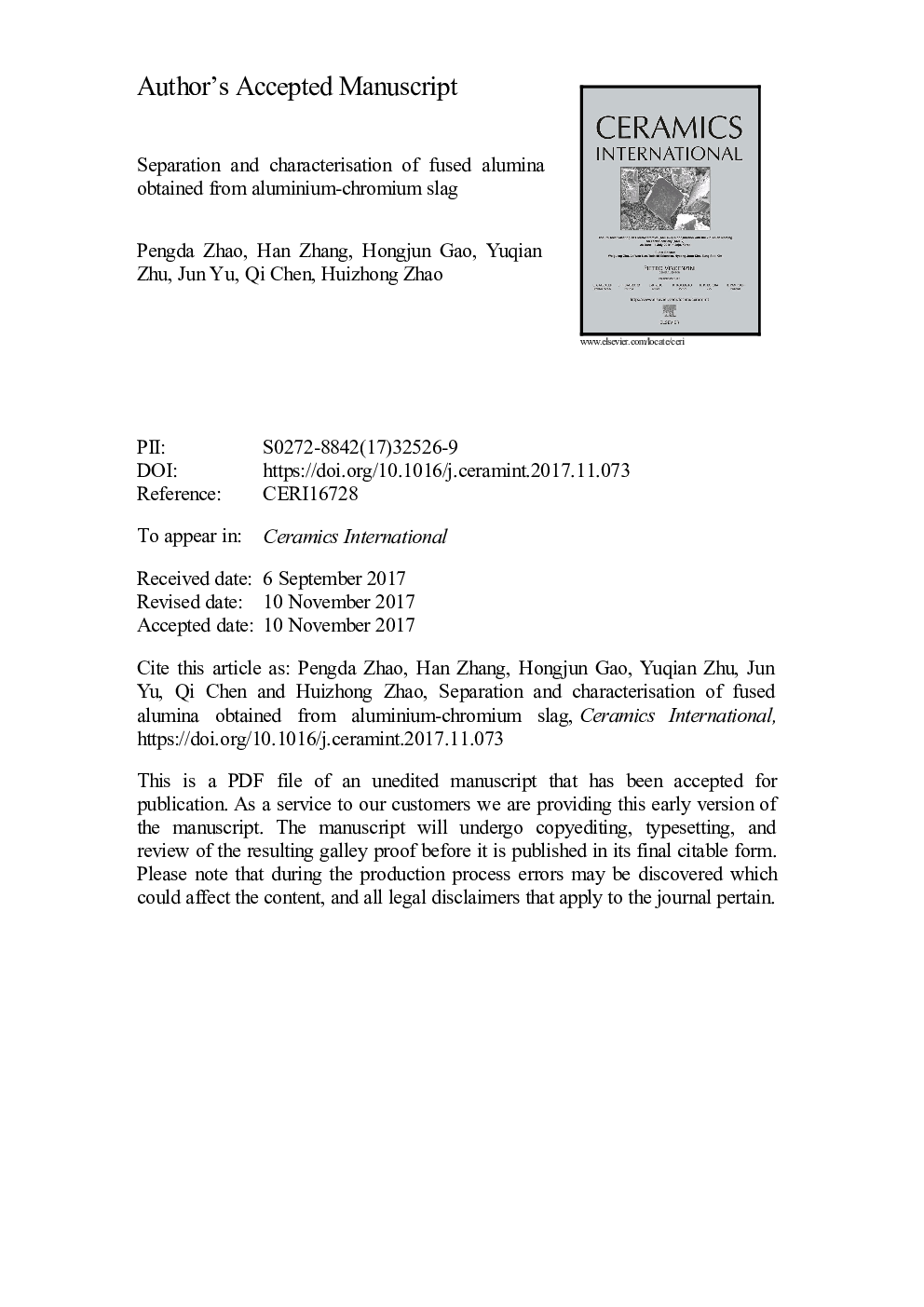| Article ID | Journal | Published Year | Pages | File Type |
|---|---|---|---|---|
| 7888048 | Ceramics International | 2018 | 25 Pages |
Abstract
Aluminium-chromium slag is a by-product of the thermal reduction of aluminium during chromium smelting, which is generally considered solid waste with a low utilisation rate. In this work, a fused carbonisation reduction method has been proposed to separate the Al2O3 and Cr2O3 from the slag and produce fused alumina and chromium carbide materials for refractory applications. The thermodynamic parameters of this process were determined using a standard thermal analysis method. In the molten slag, Cr2O3 reacts with C to produce high-density chromium carbide, which effectively precipitates at the bottom of the reaction vessel, while Al2O3 is converted into the corundum phase during cooling. The results of chemical analysis showed that the Al2O3 content in fused alumina was greater than 95 wt%, while its main crystalline phase was the corundum with a bulk density of 3.57 g cmâ3, thermal conductivity of 6.4-7.4 W mâ1 Kâ1 (at temperatures above 600 °C), and average thermal expansion coefficient of about 7.5-8.2 à 10â6/°C (in the temperature range of 800-1300 °C).
Keywords
Related Topics
Physical Sciences and Engineering
Materials Science
Ceramics and Composites
Authors
Pengda Zhao, Han Zhang, Hongjun Gao, Yuqian Zhu, Jun Yu, Qi Chen, Huizhong Zhao,
